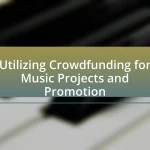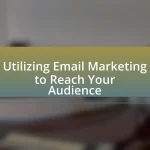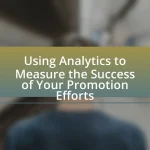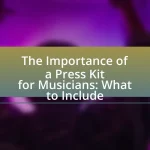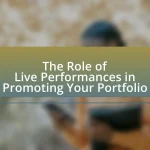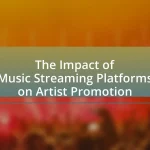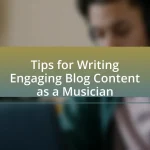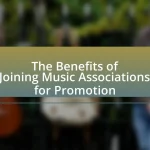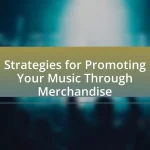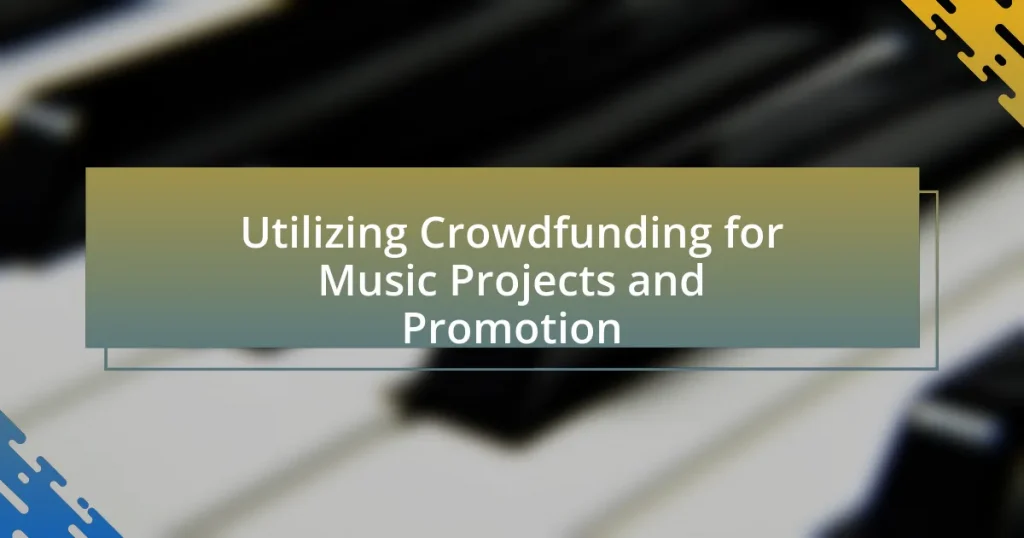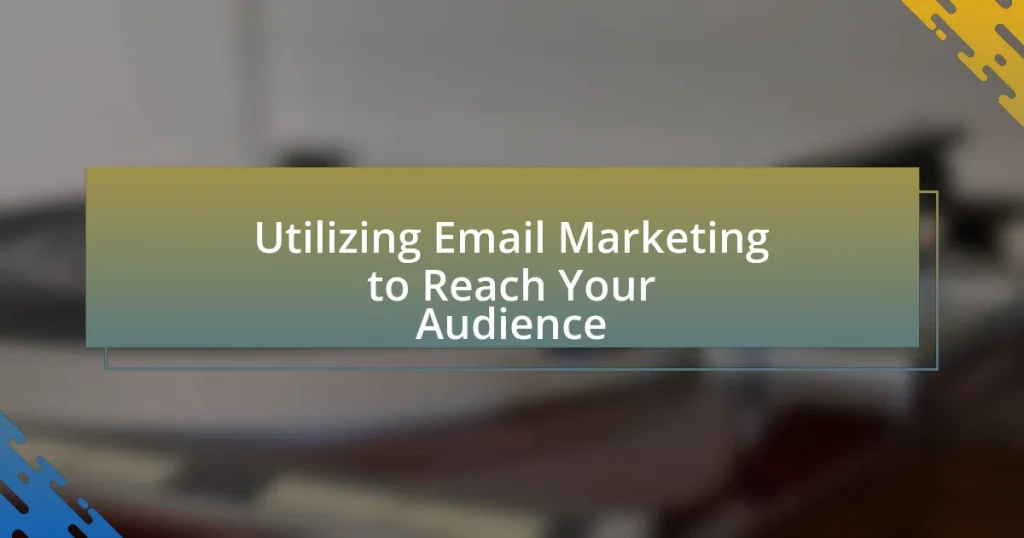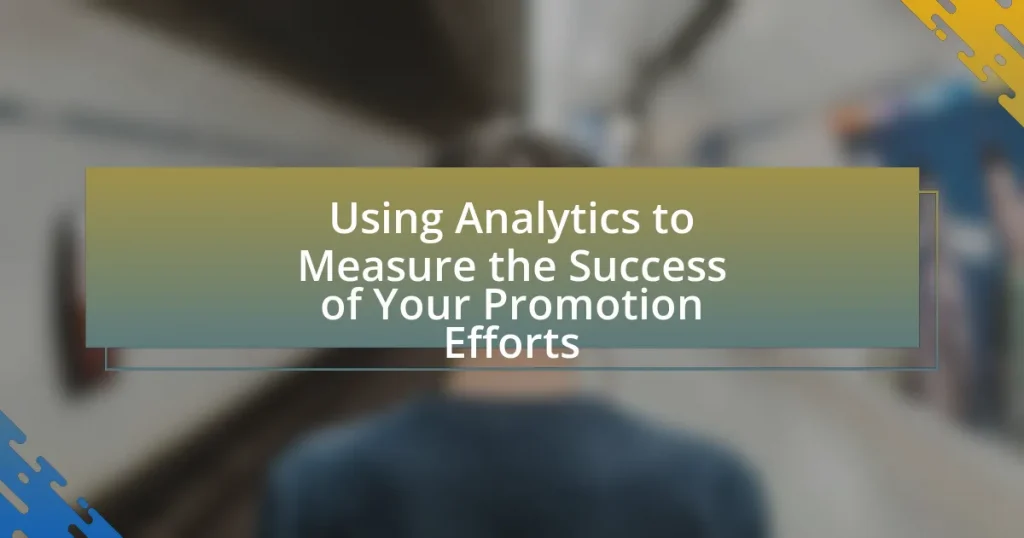Crowdfunding for music projects and promotion is a financing method that enables artists to raise funds directly from their fan base through online platforms, bypassing traditional funding sources. This article explores how crowdfunding works in the music industry, highlighting key platforms such as Kickstarter and Indiegogo, and detailing the types of projects that can benefit from this approach, including album production and concert tours. It also addresses the challenges musicians face, effective marketing strategies, and best practices for launching successful campaigns, emphasizing the importance of community engagement and clear communication with backers.
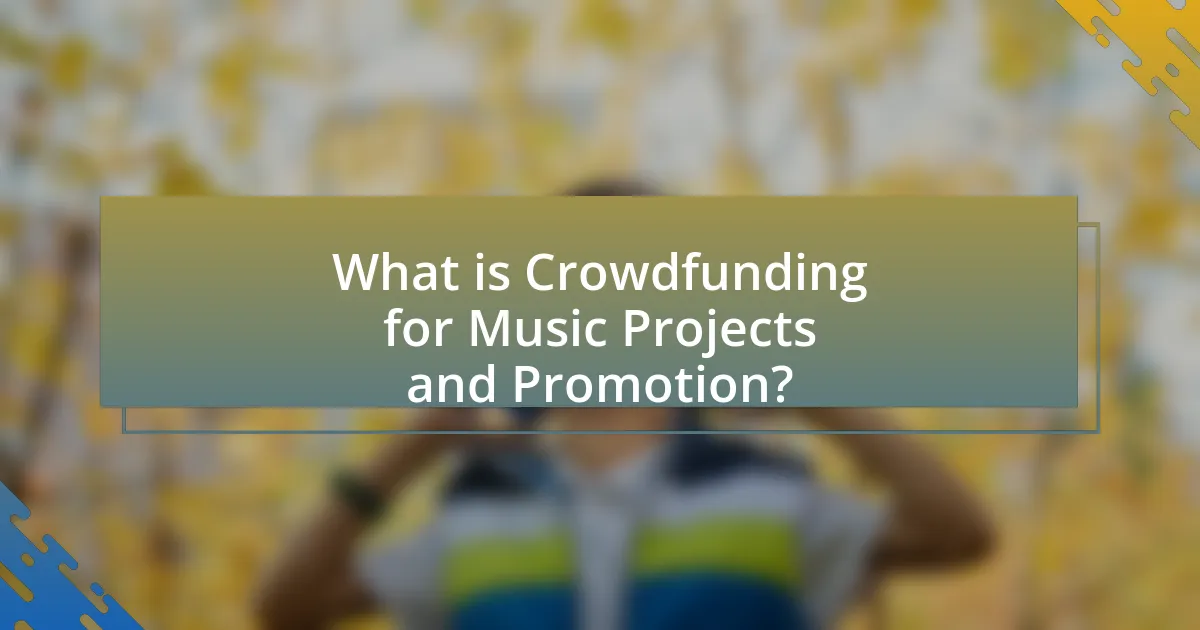
What is Crowdfunding for Music Projects and Promotion?
Crowdfunding for music projects and promotion is a method where artists raise funds from a large number of people, typically through online platforms, to finance their music-related endeavors. This approach allows musicians to gather financial support directly from their fan base and the general public, bypassing traditional funding sources like record labels or banks. According to a 2020 report by Statista, the global crowdfunding market reached approximately $12.4 billion, indicating a growing trend in this financing method. Successful campaigns often offer rewards or incentives to backers, such as exclusive content or merchandise, which further engages supporters and fosters a community around the artist’s work.
How does crowdfunding work in the music industry?
Crowdfunding in the music industry allows artists to raise funds directly from fans and supporters to finance their projects, such as albums, tours, or music videos. This process typically involves artists creating a campaign on crowdfunding platforms like Kickstarter or Indiegogo, where they outline their project goals, funding needs, and offer rewards for backers, such as exclusive content or merchandise.
For example, in 2012, Amanda Palmer raised over $1.2 million on Kickstarter for her album “Theatre Is Evil,” demonstrating the potential of crowdfunding to exceed financial goals through fan engagement. This model not only provides financial support but also fosters a community around the artist, as backers feel invested in the project’s success.
What are the key platforms for music crowdfunding?
The key platforms for music crowdfunding include Kickstarter, Indiegogo, Patreon, and PledgeMusic. Kickstarter is widely recognized for its all-or-nothing funding model, which has successfully funded numerous music projects, raising over $1 billion since its inception. Indiegogo offers flexible funding options, allowing artists to keep funds raised even if they do not meet their goal. Patreon enables artists to receive ongoing support from fans through subscription-based funding, fostering a community around their work. PledgeMusic, although it faced challenges, was specifically tailored for musicians, allowing them to offer exclusive content and experiences to backers. These platforms have collectively transformed how musicians finance their projects, providing them with direct access to their audience and funding opportunities.
How do artists set funding goals for their projects?
Artists set funding goals for their projects by assessing the total costs associated with their creative endeavors, including production, marketing, and distribution expenses. They typically create a detailed budget that outlines all necessary expenditures, ensuring that they account for both direct costs, such as studio time and equipment, and indirect costs, like promotional activities and platform fees. By analyzing similar projects and their funding outcomes, artists can establish realistic and achievable funding targets. Research indicates that successful crowdfunding campaigns often set goals that reflect the minimum amount needed to complete the project while also considering the potential for additional funding to enhance the project’s scope.
What types of music projects can benefit from crowdfunding?
Music projects that can benefit from crowdfunding include album production, music videos, concert tours, merchandise creation, and artist development. These projects often require significant financial investment, which crowdfunding can provide by allowing fans and supporters to contribute directly. For instance, successful crowdfunding campaigns for albums have raised thousands of dollars, with platforms like Kickstarter reporting that music projects accounted for 30% of their total funding in 2020. This demonstrates the viability of crowdfunding as a financial resource for various music-related endeavors.
How can crowdfunding support album production?
Crowdfunding can support album production by providing artists with the necessary financial resources to cover recording, mixing, mastering, and distribution costs. This funding model allows musicians to engage their fanbase directly, often resulting in pre-sales of the album, which can generate capital before the album is even produced. For instance, platforms like Kickstarter and Indiegogo have successfully facilitated numerous music projects, with campaigns raising thousands to tens of thousands of dollars. A notable example is Amanda Palmer, who raised over $1.2 million for her album “Theatre Is Evil” in 2012, demonstrating the potential of crowdfunding to not only fund production but also to build a community around the artist’s work.
What role does crowdfunding play in music tours and events?
Crowdfunding plays a crucial role in financing music tours and events by enabling artists to raise funds directly from their fan base. This method allows musicians to cover costs such as venue rentals, travel expenses, and marketing efforts, which can be significant barriers to organizing successful tours. For instance, a study by the University of Southern California found that 38% of musicians reported using crowdfunding to finance their projects, highlighting its growing importance in the industry. Additionally, platforms like Kickstarter and Indiegogo have facilitated millions in funding for music-related initiatives, demonstrating the effectiveness of crowdfunding in engaging fans and securing necessary resources for live performances.
Why is crowdfunding an effective promotional tool for musicians?
Crowdfunding is an effective promotional tool for musicians because it allows them to engage directly with their fanbase while securing financial support for their projects. This direct engagement fosters a sense of community and loyalty among supporters, as fans feel invested in the musician’s success. Additionally, crowdfunding platforms often provide musicians with valuable marketing exposure, as successful campaigns can attract attention from media outlets and new listeners. For instance, a study by the University of Southern California found that musicians who utilized crowdfunding not only raised funds but also expanded their audience reach by 30% on average during their campaigns.
How does crowdfunding help build a fanbase?
Crowdfunding helps build a fanbase by directly engaging supporters in the funding process, creating a sense of community and investment in the project. When artists launch crowdfunding campaigns, they often offer exclusive rewards and updates, which fosters a personal connection with backers. This interaction not only encourages financial support but also transforms backers into active fans who feel a stake in the artist’s success. Research indicates that campaigns with strong community engagement can lead to a 50% increase in fan retention rates, demonstrating the effectiveness of crowdfunding in cultivating a loyal audience.
What marketing strategies can enhance crowdfunding campaigns?
Effective marketing strategies that can enhance crowdfunding campaigns include leveraging social media, building an email list, and creating engaging content. Social media platforms like Facebook, Instagram, and Twitter allow campaigners to reach a broad audience, facilitating direct engagement and sharing. According to a study by the University of Pennsylvania, campaigns that actively engage on social media raise 50% more funds than those that do not.
Building an email list enables campaigners to communicate directly with potential backers, providing updates and personalized messages that can increase trust and investment. Research from Indiegogo shows that campaigns with a strong email outreach strategy see a 20% higher success rate.
Creating engaging content, such as videos and storytelling, captures the audience’s attention and conveys the project’s vision effectively. A report from Kickstarter indicates that projects with video presentations are 50% more likely to reach their funding goals. These strategies collectively enhance visibility, engagement, and trust, leading to more successful crowdfunding campaigns.
How can musicians successfully launch a crowdfunding campaign?
Musicians can successfully launch a crowdfunding campaign by clearly defining their project goals, engaging their audience, and offering compelling rewards. Establishing specific financial targets and timelines helps potential backers understand the project’s scope and urgency. Engaging the audience through social media and personal outreach fosters a sense of community and investment in the project. Offering tiered rewards, such as exclusive content or merchandise, incentivizes contributions and enhances backer satisfaction. According to a study by the University of Southern California, campaigns that effectively communicate their vision and maintain regular updates achieve higher funding success rates, demonstrating the importance of transparency and engagement in crowdfunding efforts.
What are the essential steps to prepare for a crowdfunding campaign?
The essential steps to prepare for a crowdfunding campaign include defining your project, setting a funding goal, creating a compelling pitch, building a marketing strategy, and engaging with your audience. Defining your project involves clearly articulating what you aim to achieve and why it matters, which helps potential backers understand its significance. Setting a funding goal requires calculating the total amount needed to complete the project, ensuring it is realistic and achievable based on similar campaigns. Creating a compelling pitch involves crafting a narrative that resonates with your audience, supported by visuals and rewards that incentivize contributions. Building a marketing strategy entails planning how to promote the campaign across various channels, including social media and email, to maximize reach. Engaging with your audience throughout the campaign fosters community and encourages support, which is crucial for success. These steps are validated by successful crowdfunding campaigns that emphasize preparation and audience connection as key factors in achieving funding goals.
How can musicians engage their audience during the campaign?
Musicians can engage their audience during a crowdfunding campaign by offering exclusive content and experiences. This can include behind-the-scenes access, personalized messages, or limited-edition merchandise, which incentivizes fans to participate and feel a deeper connection to the project. Research indicates that campaigns with engaging rewards see a 30% higher success rate, demonstrating the effectiveness of audience engagement strategies in crowdfunding.
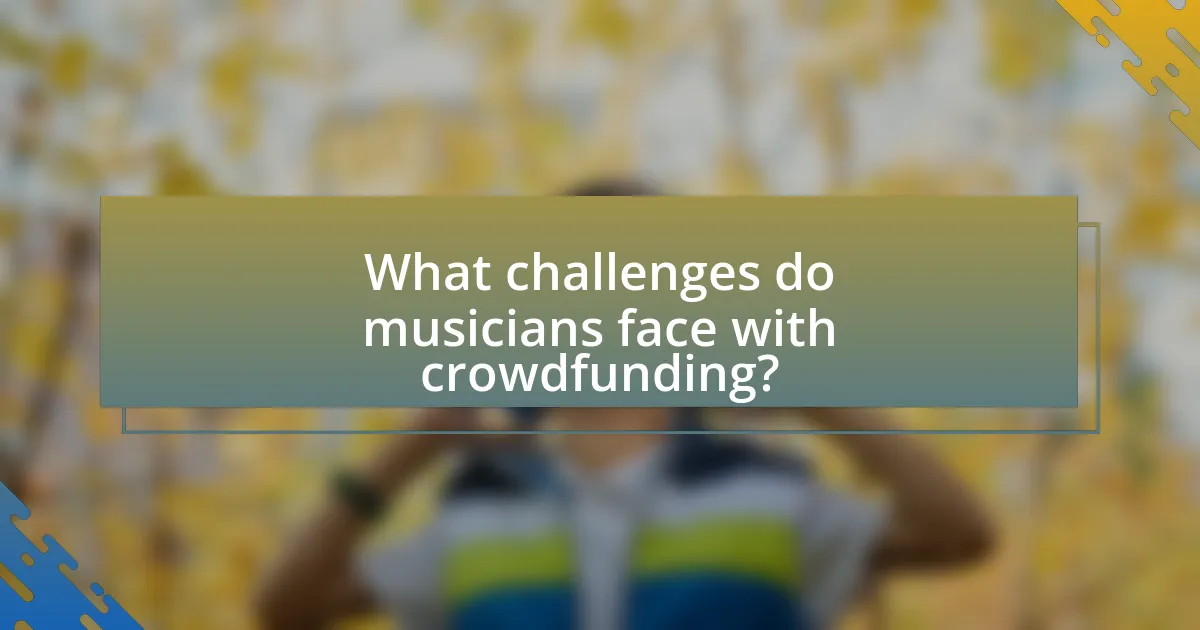
What challenges do musicians face with crowdfunding?
Musicians face several challenges with crowdfunding, including competition for attention, the need for effective marketing, and the risk of not reaching funding goals. The competitive landscape is significant, as numerous projects vie for the same pool of potential backers, making it difficult for individual musicians to stand out. Additionally, musicians must invest time and resources into marketing their campaigns, which can be a daunting task for those without prior experience in promotion. Furthermore, statistics indicate that approximately 30% of crowdfunding campaigns fail to meet their funding targets, highlighting the financial risk involved for musicians who may not secure the necessary funds to complete their projects.
What common pitfalls should musicians avoid in crowdfunding?
Musicians should avoid several common pitfalls in crowdfunding, including setting unrealistic funding goals. When musicians set goals that are too high, they risk not reaching the target, which can lead to project failure and loss of credibility. Additionally, failing to engage with their audience before launching a campaign can result in low initial support; research indicates that campaigns with pre-launch engagement often perform better. Another pitfall is neglecting to offer compelling rewards; musicians must provide incentives that resonate with backers to encourage contributions. Lastly, poor communication during the campaign can alienate supporters; consistent updates and transparency are crucial for maintaining trust and interest.
How can unrealistic funding goals impact a campaign?
Unrealistic funding goals can significantly undermine a campaign by leading to decreased backer confidence and engagement. When a campaign sets funding targets that are perceived as unattainable, potential supporters may feel discouraged and less likely to contribute, resulting in lower overall funding. For instance, a study by Indiegogo found that campaigns with realistic goals are 20% more likely to succeed than those with overly ambitious targets. This demonstrates that setting achievable funding goals is crucial for maintaining momentum and attracting backers in crowdfunding efforts for music projects.
What are the consequences of poor communication with backers?
Poor communication with backers can lead to decreased trust and support for a crowdfunding campaign. When backers feel uninformed or neglected, they may withdraw their financial support or choose not to engage with future projects. Research indicates that effective communication is crucial for maintaining backer relationships; for instance, a study by the University of Pennsylvania found that transparency and regular updates significantly enhance backer satisfaction and retention. Additionally, poor communication can result in negative public perception, which can harm the project’s reputation and future funding opportunities.
How can musicians overcome obstacles in crowdfunding?
Musicians can overcome obstacles in crowdfunding by developing a strong marketing strategy and engaging their audience effectively. A well-defined marketing plan helps musicians communicate their project goals clearly, which can attract potential backers. Engaging with the audience through social media, email newsletters, and live events fosters a sense of community and encourages support. Research indicates that campaigns with active social media engagement raise 50% more funds than those without. Additionally, offering compelling rewards and maintaining transparency about project progress can further enhance trust and motivate contributions.
What strategies can improve campaign visibility?
To improve campaign visibility, leveraging social media platforms is essential. Social media allows for targeted advertising, engaging content sharing, and direct interaction with potential supporters, which can significantly increase reach. For instance, campaigns that utilize Facebook and Instagram ads can achieve up to 30% higher engagement rates compared to traditional marketing methods. Additionally, collaborating with influencers in the music industry can amplify visibility, as influencers can introduce the campaign to their established audiences, leading to increased awareness and support. Research indicates that campaigns with influencer partnerships can raise 11 times more funds than those without.
How can artists effectively manage backer expectations?
Artists can effectively manage backer expectations by maintaining clear and consistent communication throughout the crowdfunding process. This involves providing regular updates on project progress, setting realistic timelines for deliverables, and being transparent about any challenges encountered. Research indicates that projects with frequent updates are 50% more likely to reach their funding goals, as backers feel more engaged and informed. By establishing a clear communication strategy, artists can foster trust and ensure that backers have a realistic understanding of what to expect, ultimately leading to a more positive crowdfunding experience.
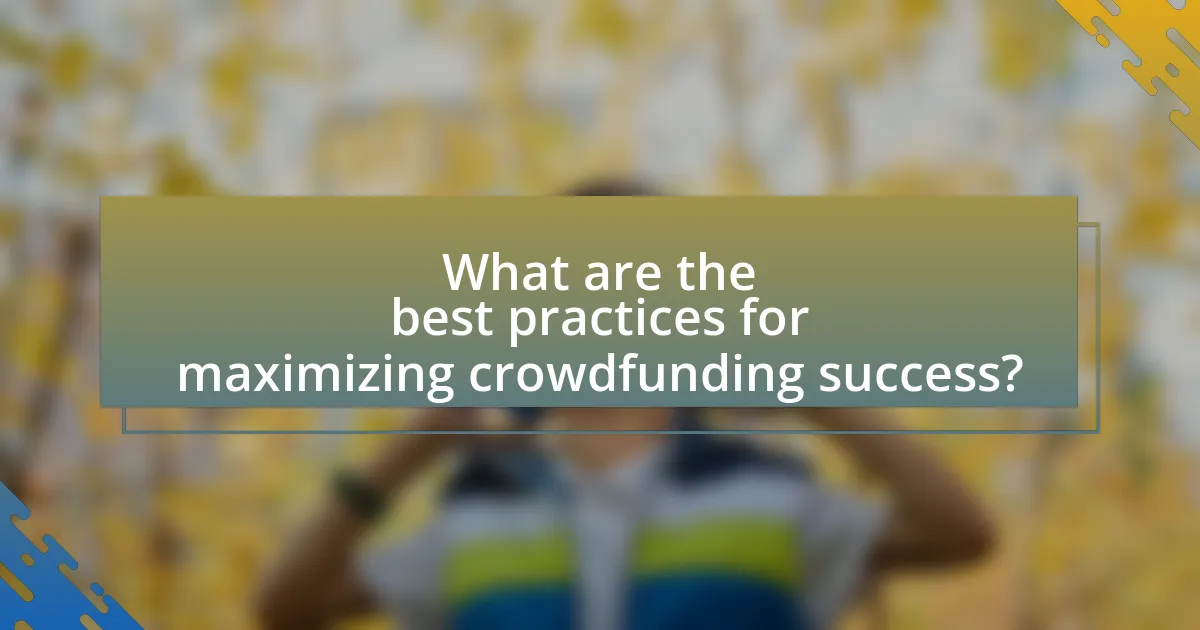
What are the best practices for maximizing crowdfunding success?
To maximize crowdfunding success, creators should focus on building a strong community and effectively communicating their project’s value. Engaging potential backers through social media and personal outreach fosters trust and excitement, which are crucial for funding. Research indicates that campaigns with a well-defined target audience and clear messaging raise 50% more funds than those without. Additionally, offering attractive rewards and maintaining transparency throughout the campaign can significantly enhance backer engagement and retention.
How can storytelling enhance a crowdfunding campaign?
Storytelling can enhance a crowdfunding campaign by creating an emotional connection between the project and potential backers. This connection increases engagement and motivates individuals to contribute financially. Research indicates that campaigns that incorporate personal narratives and relatable experiences tend to raise 20% more funds than those that do not. By sharing compelling stories about the project’s purpose, challenges, and the impact of contributions, creators can effectively communicate their vision and inspire trust, leading to higher funding success.
What elements make a compelling campaign video?
A compelling campaign video includes a clear message, emotional appeal, strong visuals, and a call to action. The clarity of the message ensures that viewers understand the purpose of the campaign, while emotional appeal engages the audience on a personal level, making them more likely to connect with the cause. Strong visuals, such as high-quality footage and engaging graphics, capture attention and maintain interest throughout the video. Finally, a clear call to action directs viewers on what steps to take next, whether it’s donating, sharing, or participating in the campaign. Research indicates that videos with these elements can increase viewer engagement and conversion rates significantly, making them essential for effective crowdfunding efforts in music projects.
How important are rewards and incentives for backers?
Rewards and incentives are crucial for backers in crowdfunding, as they significantly influence funding decisions and project engagement. Research indicates that projects offering tangible rewards can increase backer participation by up to 50%, as backers are motivated by the perceived value of receiving something in return for their support. Additionally, a study published in the Journal of Business Research found that well-structured reward tiers can enhance backer satisfaction and encourage higher funding amounts, demonstrating that effective incentives directly correlate with successful crowdfunding outcomes.
What role does social media play in crowdfunding for music?
Social media serves as a crucial platform for crowdfunding in the music industry by facilitating direct engagement between artists and their audiences. It enables musicians to promote their crowdfunding campaigns, share updates, and connect with potential backers in real-time. According to a 2020 study by the University of Southern California, 70% of successful music crowdfunding campaigns utilized social media to reach their funding goals, demonstrating its effectiveness in expanding audience reach and fostering community support.
How can musicians leverage social media platforms to promote their campaigns?
Musicians can leverage social media platforms to promote their campaigns by creating engaging content that resonates with their audience and utilizing targeted advertising features. Engaging content, such as behind-the-scenes videos, live performances, and interactive posts, fosters a connection with fans, encouraging them to share and support the campaign. Additionally, platforms like Facebook and Instagram offer targeted advertising tools that allow musicians to reach specific demographics, increasing visibility and potential backers. According to a 2021 study by the Pew Research Center, 69% of adults in the U.S. use social media, highlighting its effectiveness as a promotional tool for reaching a broad audience.
What are effective ways to engage with followers during a campaign?
Effective ways to engage with followers during a campaign include utilizing interactive content, personalized communication, and regular updates. Interactive content, such as polls and quizzes, encourages participation and feedback, fostering a sense of community. Personalized communication, like addressing followers by name in messages and responding to comments, enhances connection and loyalty. Regular updates about campaign progress keep followers informed and invested, as evidenced by a study from the Content Marketing Institute, which found that 70% of consumers prefer brands that provide consistent updates. These strategies collectively enhance engagement and strengthen relationships with followers throughout the campaign.
What practical tips can musicians follow for successful crowdfunding?
Musicians can achieve successful crowdfunding by clearly defining their project goals and engaging their audience effectively. Establishing a specific funding target and timeline helps potential backers understand the project’s scope and urgency. Additionally, creating compelling rewards for different contribution levels incentivizes support, as seen in successful campaigns where tiered rewards increased backer participation. Utilizing social media platforms to promote the campaign and share updates fosters community involvement and keeps supporters informed. Furthermore, leveraging storytelling techniques to convey the project’s vision and personal connection can resonate with potential backers, enhancing emotional investment. Research indicates that campaigns with strong narratives raise 20% more funds than those without.
How can musicians create a timeline for their crowdfunding efforts?
Musicians can create a timeline for their crowdfunding efforts by outlining key phases such as planning, launching, and promoting their campaign. Initially, they should set a clear goal and budget, followed by a timeline that includes specific milestones like campaign launch date, promotional activities, and deadlines for reaching funding targets. For example, a typical timeline might span 30-60 days, with the first week dedicated to building awareness, the next weeks focused on engaging backers, and the final days emphasizing urgency to meet funding goals. This structured approach helps maintain momentum and ensures that all necessary tasks are completed on time, ultimately increasing the likelihood of a successful crowdfunding campaign.
What are the key metrics to track during a crowdfunding campaign?
The key metrics to track during a crowdfunding campaign include total funds raised, number of backers, average pledge amount, funding progress over time, and engagement metrics such as social media shares and comments. Total funds raised indicates the overall financial success of the campaign, while the number of backers reflects the level of community support. The average pledge amount helps assess donor behavior, and tracking funding progress over time allows for adjustments in strategy if needed. Engagement metrics provide insight into the campaign’s reach and effectiveness in attracting attention. These metrics are essential for evaluating the campaign’s performance and making informed decisions to enhance its success.
